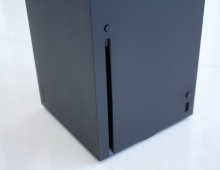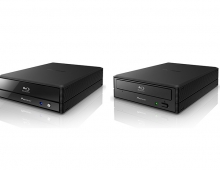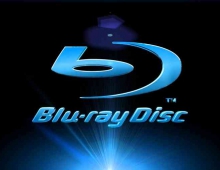
SEI commences sample shipments of low-dislocation GaN single crystal substrate for Violet Lasers
Sumitomo Electric Industries, Ltd. (SEI) has succeeded in developing a novel single-crystal gallium nitride (GaN) substrate that may be used in violet lasers for high capacity, next generation `Blu-ray Disc` optical video recording technology. SEI has started shipping samples and is presently working to mass-produce the substrates.
Presently, manufacturers of audio-visual equipment are negotiating to
establish a unified standard for a new optical video recording format
called `Blu-ray Disc`. `Blu-ray Disc` enables the recording and writing of data from and to optical discs using a violet laser that has a shorter wavelength than the red laser used in DVD players.
The new substrate has low dislocation (crystal defect) areas arranged orderly. Each low dislocation area of new substrate is about 500 microns in diameter. The density per square centimeter of these low dislocation areas is between 10,000 and 100,000, that is 100,000 times less than the dislocation density of conventional GaN epitaxial layers on sapphire substrates. These low dislocation areas arranged orderly allow easy device fabrication.
In the epitaxial growth of GaN, sapphire substrates are commonly used and recent research has focused on making GaN-based violet laser devices using sapphire substrates.
Since the physical properties of sapphire substrates and GaN are different, sapphire substrates cause dislocation density to become extremely high, which reduce the lifetime of the laser and have led to delays in the practical application of GaN-based violet lasers.
In order to overcome the problem of dislocations, the epitaxial lateral overgrowth (ELO) technique is used in the development of violet laser. The ELO technique allows dislocations to be reduced to a small area of a few microns in width. However, when the ELO technique is used, it is difficult to cleave the crystal and obtain a laser reflective surface.
The development of a high-quality, low-dislocation single-crystal GaN substrate, on which epitaxial growth of GaN can be performed has long been seen as a way to solve this problem.
SEI, which has extensive experience in the development of GaN substrates and had developed the worldfs first 2-inch GaN wafer in 2000, established its own unique GaN substrate fabrication process, called the Dislocation Elimination by Epitaxial growth with inverse-pyramidal Pits, or `DEEP` technique, which reduces dislocations by forming inverse-pyramidal pits on the surface of the crystal.
However, even with the use of `DEEP` low dislocation areas were not large enough. So SEI managed to develop a technique that controls the area where dislocations are concentrated. This technique enables the formation of larger low-dislocation areas. Low dislocation areas, each about 500 microns in diameter, are arranged orderly, allowing easy device fabrication.
For lasers to have sufficient lifetime, the density per square centimeter of these dislocation areas on the substrate must be less than 100,000. SEI`s newly developed low-density GaN substrate has a dislocation density of between 10,000 and 100,000, which is 1/10,000 and 1/100,000 the dislocation density of conventional GaN epitaxial layers on sapphire substrates.
The new substrate also features higher conductivity and offers better cleavages, therefore is highly efficient when used in laser devices.
Test developments of a two-inch substrate of this type have proved successful and SEI has started shipping samples. After laser device manufacturers evaluate the new GaN substrate, mass-production will start by the time Blu-ray Disc comes to market. SEI forecasts the production of low-dislocation GaN substrates to reach 300 per month by April 2003.
The new substrate has low dislocation (crystal defect) areas arranged orderly. Each low dislocation area of new substrate is about 500 microns in diameter. The density per square centimeter of these low dislocation areas is between 10,000 and 100,000, that is 100,000 times less than the dislocation density of conventional GaN epitaxial layers on sapphire substrates. These low dislocation areas arranged orderly allow easy device fabrication.
In the epitaxial growth of GaN, sapphire substrates are commonly used and recent research has focused on making GaN-based violet laser devices using sapphire substrates.
Since the physical properties of sapphire substrates and GaN are different, sapphire substrates cause dislocation density to become extremely high, which reduce the lifetime of the laser and have led to delays in the practical application of GaN-based violet lasers.
In order to overcome the problem of dislocations, the epitaxial lateral overgrowth (ELO) technique is used in the development of violet laser. The ELO technique allows dislocations to be reduced to a small area of a few microns in width. However, when the ELO technique is used, it is difficult to cleave the crystal and obtain a laser reflective surface.
The development of a high-quality, low-dislocation single-crystal GaN substrate, on which epitaxial growth of GaN can be performed has long been seen as a way to solve this problem.
SEI, which has extensive experience in the development of GaN substrates and had developed the worldfs first 2-inch GaN wafer in 2000, established its own unique GaN substrate fabrication process, called the Dislocation Elimination by Epitaxial growth with inverse-pyramidal Pits, or `DEEP` technique, which reduces dislocations by forming inverse-pyramidal pits on the surface of the crystal.
However, even with the use of `DEEP` low dislocation areas were not large enough. So SEI managed to develop a technique that controls the area where dislocations are concentrated. This technique enables the formation of larger low-dislocation areas. Low dislocation areas, each about 500 microns in diameter, are arranged orderly, allowing easy device fabrication.
For lasers to have sufficient lifetime, the density per square centimeter of these dislocation areas on the substrate must be less than 100,000. SEI`s newly developed low-density GaN substrate has a dislocation density of between 10,000 and 100,000, which is 1/10,000 and 1/100,000 the dislocation density of conventional GaN epitaxial layers on sapphire substrates.
The new substrate also features higher conductivity and offers better cleavages, therefore is highly efficient when used in laser devices.
Test developments of a two-inch substrate of this type have proved successful and SEI has started shipping samples. After laser device manufacturers evaluate the new GaN substrate, mass-production will start by the time Blu-ray Disc comes to market. SEI forecasts the production of low-dislocation GaN substrates to reach 300 per month by April 2003.





















